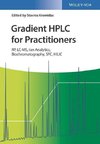
-
 Anglický jazyk
Anglický jazyk
Electronic States of Molecules and Atom Clusters
Autor: G. Del Re
1. Models and concepts in molecular theory.- 1.1 Scope of the quantum theory of molecules.- 1.2 Born Oppenheimer states.- 1.3 Computational and interpretational problems.- 1.4 R¿le and limitations of simplified models.- 1.5 Simplified models and model Hamiltonians.-... Viac o knihe
Na objednávku
49.49 €
bežná cena: 54.99 €
O knihe
1. Models and concepts in molecular theory.- 1.1 Scope of the quantum theory of molecules.- 1.2 Born Oppenheimer states.- 1.3 Computational and interpretational problems.- 1.4 R¿le and limitations of simplified models.- 1.5 Simplified models and model Hamiltonians.- 1.6 Atoms in molecules and electronegativities.- 1.6.1 Electronegativity in the VB method.- 1.6.2 Valence state concept.- 1.6.3 Hybridization and electronegativities.- 1.7 A conclusion: Models and the Plague of Non-observables.- 2. Mathematical foundations.- 2.1 Mathematical construction of many-electron models from an orbital basis.- 2.1.1 Second quantization formalism.- 2.1.2 Many-electron basis: implications of limited Cl.- 2.2 Model Hamiltonians.- 2.2.1 Non-interacting electrons.- 2.2.2 Intermediate models.- 2.2.3 The pairing theorem.- 2.3 Matrix formalism. Inclusion of overlap.- 2.3.1 The orbital bases and one-electron operators.- 2.3.2 Linear transformations.- 2.3.3 Creation-annihilation operators and the Hamiltonian.- 2.3.4 Eigenvalue equation for H?.- 2.4 The spectral decomposition of the Hamiltonian and effective potentials.- 2.4.1 The Spectral resolution and projection operators.- 2.4.2 Durand¿s effective Hamiltonians.- 2.4.3 Effective Hamiltonians and pseudopotentials.- 3. One-electron schemes.- 3.1 H¿ckel-type methods.- 3.2 A ¿naive¿ method for ? electrons.- 3.2.1 Inductive effect and atomic parameters.- 3.2.2 A one-electron Hamiltonian for localized bonds.- 3.2.3 Atomic parameters and the electronegativities of atoms in situ.- 3.2.4 Numerical details.- 3.2.5 Critical comments.- 3.3 The H¿ckel method for all valence-electrons: The tight binding (TB) approach of solid-state physics.- 3.3.1 The nearest-neighbour approximation.- 3.3.2 The case of many orbitals per atom.- 3.3.3 Core repulsions. Applications.- 3.3.4 The H¿ckel method as a pseudopotential scheme.- 3.4 All-valence-electron treatments: The extended H¿ckel theory (EHT).- 3.4.1 Justification and limitations of EHT.- 3.4.2 Applications of the EH method.- 3.4.3 Systems with several heteroatoms: The parameter question.- 4. Simplified SCF one-electron schemes and beyond.- 4.1 The SCF Hamiltonian.- 4.1.1 A simplified form of the total Hamiltonian.- 4.1.2 The basis and the operator n?ls.- 4.1.3 The one-electron SCF Hamiltonian.- 4.2 Construction of non-SCF Hamiltonians.- 4.2.1 General expression.- 4.2.2 The H¿ckel model.- 4.2.3 Determination of R(Math).- 4.2.4 Analysis of H?eff: The AO basis.- 4.2.5 SCF methods as independent-particle models.- 4.3 Many-electron models and their SCF version.- 4.3.1 Hubbard and Anderson Hamiltonian.- 4.3.2 Interaction between an atom and a solid.- 4.3.3 Average occupation number.- 4.4 Methods with iterative determination of atomic parameters.- 4.4.1 The in situ atomic orbital energy.- 4.4.2 Models based on equation (4.4.1).- 4.5 The PPP method and its extensions (CNDO family).- 4.5.1 The PPP method.- 4.5.2 All-valence PPP (NDO) methods.- 4.5.3 Applications of NDO methods: Hoffmann-Heilbrunner ¿through-space¿ and ¿through-bond¿ interactions.- 4.5.4 Applications of NDO method to polymers and crystals.- 4.5.5 Critique of NDO procedures.- 4.6 A general form of all valence SCF methods: The SCF extended-H¿ckel method.- 4.6.1 Expression of two-electron integrals.- 4.5.2 Core Hamiltonian matrix,.- 4.6.3 Calculation of matrix element of H?eff.- 4.6.4 Model Hamiltonian.- 4.7 Beyond one-electron schemes. Correlation, PCILO method excited states.- 4.7.1 Model Hamiltonians and configuration interaction.- 4.7.2 Semiempirical PCILO method.- 4.7.3 Applications of PCILO method.- 4.7.4 Calculations on excited states.- 4.8 A case study in semiempirical computations: Molecular force fields.- 4.8.1 Experimental material.- 4.8.2 Theoretical approaches.- 4.8.3 Force constant in tt electron-theories.- 4.9 Limitations of semiempirical and limited-basis methods: The N2O4 molecule.- 5. The basis problem.- 5.1 MVAO basis.- 5.1.1 Localization: A specific example.- 5.1.2 Localization and overlap.- 5.1.3 Hybridization and localization.- 5.2 Non-orthogonality.- 5.2.1 The Hiickel method in a nonorthogonal basis.- 5.2.2 Non-orthogonality catastrophe and n.n.a.- 5.2.3 Block factorization of the overlap matrix.- 5.3 General orbital bases.- 5.3.1 Transformation of basis and EH method.- 5.3.2 Basis and parameter problem.- 5.4 ?-Electron models and the ?-? separation.- 5.4.1 ?-Electrons or ?-orbitals?.- 5.4.2 Many electron aspects of the ?-? separation.- 5.4.3 An application of ?-electron schemes: Azulene.- 5.5 Basis problem in solid-state physics.- 5.5.1 Completeness and equivalence.- 5.5.2 OPW method.- 5.5.3 APW method, X? method, and related approaches.- 5.6 Metal-metal bond and the X? method.- 5.6.1 Metal-metal bond.- 5.6.2 Bond lengths.- 5.6.3 Theoretical treatments of metal-metal bonds.- 5.7 Reliability of computations and choice of the orbital basis.- 5.7.1 ZDO assumptions.- 5.7.2 Ab-initio methods as semiempirical methods.- 5.8 A comment on the use of group theory in calculations on molecules and aggregates of atoms.
- Vydavateľstvo: Springer Berlin Heidelberg
- Rok vydania: 1980
- Formát: Paperback
- Rozmer: 244 x 170 mm
- Jazyk: Anglický jazyk
- ISBN: 9783540097389



 Nemecký jazyk
Nemecký jazyk 








